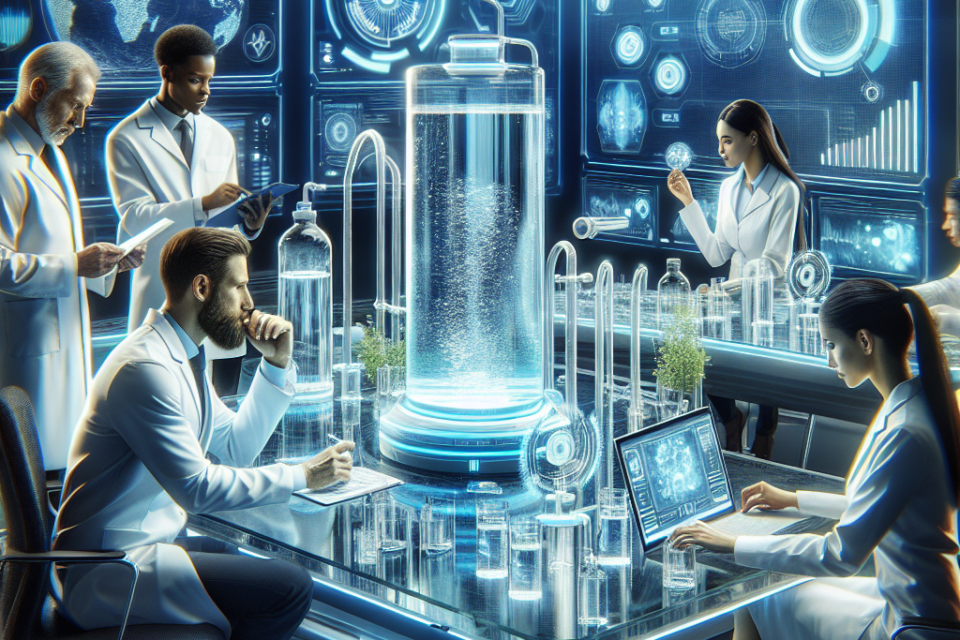Innovations in Water Purification Tech

Safe and clean drinking water is a fundamental need for human life. However, ensuring access to potable water remains a significant challenge in many parts of the world. Fortunately, recent advancements in water purification technology offer promising solutions to this problem. In this article, we will explore some of the latest innovations in water purification tech that are making waves.
1. Nano-Technology Filters
One of the most groundbreaking advancements in water purification is the use of nano-technology filters. These filters utilize tiny particles, often made from materials like silver or carbon nanotubes, to capture contaminants at the molecular level. Nano-filters can remove viruses, bacteria, and even heavy metals from water, making it safe for consumption.
Advantages of Nano-Technology Filters
- High Efficiency: Capable of removing contaminants that traditional filters cannot.
- Cost-Effective: Requires less maintenance and can last longer than conventional filters.
- Versatility: Can be used in various settings, from household water systems to large-scale industrial applications.
2. Solar Water Purification
Solar water purification is an eco-friendly technology that leverages the power of the sun to clean water. Solar stills and solar disinfection (SODIS) are two popular methods. Solar stills evaporate water and then condense the vapor, leaving contaminants behind. SODIS uses ultraviolet rays from the sun to kill pathogens in water stored in clear plastic bottles.
Benefits of Solar Water Purification
- Sustainable: Utilizes renewable solar energy, reducing reliance on fossil fuels.
- Accessible: Ideal for remote and off-grid areas.
- Low Cost: Minimal operational costs once the initial setup is complete.
3. Graphene-Based Water Filters
Graphene, a single layer of carbon atoms arranged in a hexagonal lattice, has emerged as a revolutionary material for water filtration. Graphene-based filters are incredibly effective at removing pollutants, including viruses, bacteria, and organic molecules, due to their unique properties.
Why Choose Graphene-Based Filters?
- High Permeability: Allows for faster water flow while retaining contaminants.
- Durability: Highly robust and resistant to fouling.
- Flexibility: Can be integrated into existing water purification systems or used independently.
4. Advanced Oxidation Processes (AOPs)
Advanced Oxidation Processes (AOPs) involve the generation of highly reactive radicals that can break down complex contaminants into harmless substances. Common AOPs include ozone, hydrogen peroxide, and UV radiation. These processes are particularly effective in treating industrial wastewater and removing persistent organic pollutants.
AOPs in Action
- Efficiency: Capable of degrading contaminants that are resistant to conventional treatments.
- Adaptability: Can be used in conjunction with other purification methods for enhanced efficacy.
- Environmental Impact: Generates fewer harmful byproducts compared to traditional chemical treatments.
5. Bioremediation
Bioremediation harnesses the power of microorganisms to degrade contaminants in water. This method is particularly useful for cleaning up oil spills, heavy metals, and other organic pollutants. By using bacteria and fungi that naturally break down contaminants, bioremediation offers a natural and sustainable way to purify water.
The Promise of Bioremediation
- Eco-Friendly: Utilizes natural processes, reducing the need for chemical treatments.
- Cost-Efficient: Often more affordable than extensive mechanical or chemical treatments.
- Effectiveness: Capable of dealing with a wide range of pollutants.
In conclusion, the future of water purification is bright, thanks to these innovative technologies. From nano-technology filters to bioremediation, each method offers unique advantages that contribute to providing safe and clean water. As these technologies continue to evolve and become more accessible, they hold the potential to make a significant impact on global water security.
